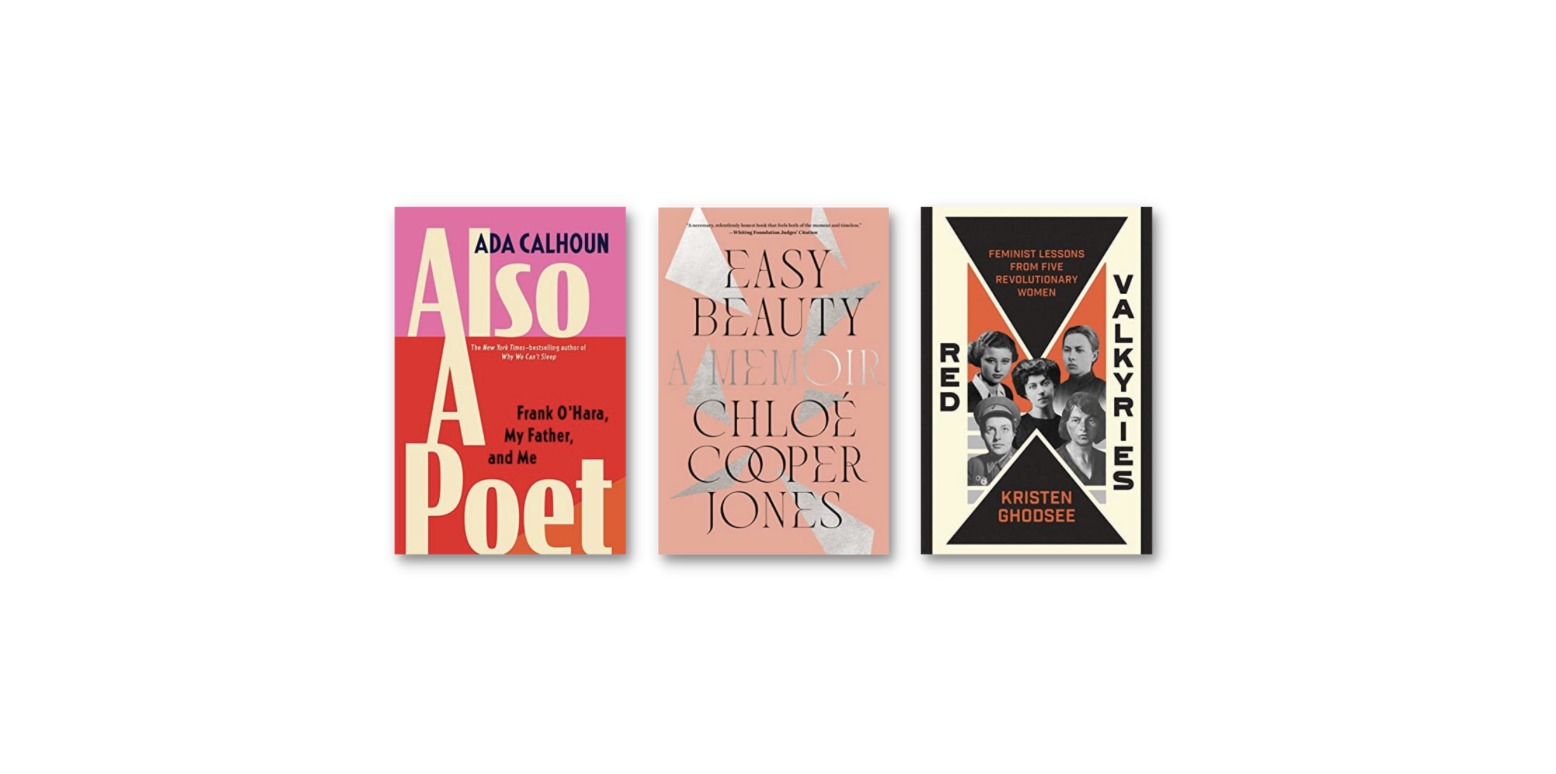2022 was, for me, cleaved in half, courtesy of a cataclysmic heartbreak that fell right at the year’s midpoint. I didn’t realize how neatly the year was split in two until I sat down to write this: I haven’t had a 2022 so much as a 2022a (lush, textured, all possibility) and 2022b (hollow, flat, a cul-de-sac). Of course, books were a constant in both halves. I read when I felt vigorous and curious and when I felt hopeless and desperate. I read to experience the world more fully and to shut it out completely. And I read because I needed to make a dent in the embarrassment of riches that accumulated on my bookshelf this year. Here are some highlights from that reading.
2022a
 I’m always a sucker for biographies about women writers, thinkers, and luminaries. Partly as a source of inspiration—in charting their life paths I can make a bit more sense of my own—but mostly for what Kennedy Fraser calls “the pain.” I’ll explain: In the title essay of her 1996 collection Ornament and Silence: Essays on Women’s Lives from Edith Wharton to Germaine Greer, Fraser writes, about “a time when my life seemed too painful to me that reading about the lives of other women writers was one of the few things that could help.” She continues: “The successes gave me hope, of course, yet it was the desperate bits I liked best”; she was looking for “the pain.” Reading about the adversity of my foremothers makes me feel that I’ve either got it easy in comparison or can surely survive any comparable adversity.
I’m always a sucker for biographies about women writers, thinkers, and luminaries. Partly as a source of inspiration—in charting their life paths I can make a bit more sense of my own—but mostly for what Kennedy Fraser calls “the pain.” I’ll explain: In the title essay of her 1996 collection Ornament and Silence: Essays on Women’s Lives from Edith Wharton to Germaine Greer, Fraser writes, about “a time when my life seemed too painful to me that reading about the lives of other women writers was one of the few things that could help.” She continues: “The successes gave me hope, of course, yet it was the desperate bits I liked best”; she was looking for “the pain.” Reading about the adversity of my foremothers makes me feel that I’ve either got it easy in comparison or can surely survive any comparable adversity.
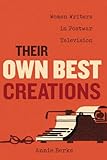
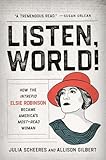
 In that spirit, in addition to Ornaments and Silence, I read Their Own Best Creations, Annie Berke’s lucid cultural history of the women writers behind postwar television; Allison Gilbert and Julia Scheeres’s Listen, World!, a lively and engrossing account of the life and work of trailblazing newspaper columnist Elsie Robinson; and artist Celia Paul’s Letters to Gwen John, a stirring memoir-cum-biography that draws parallels between Paul and the titular post-Impressionist painter—all wonderful biographies that meted out just the right amount of encouragement alongside The Pain.
In that spirit, in addition to Ornaments and Silence, I read Their Own Best Creations, Annie Berke’s lucid cultural history of the women writers behind postwar television; Allison Gilbert and Julia Scheeres’s Listen, World!, a lively and engrossing account of the life and work of trailblazing newspaper columnist Elsie Robinson; and artist Celia Paul’s Letters to Gwen John, a stirring memoir-cum-biography that draws parallels between Paul and the titular post-Impressionist painter—all wonderful biographies that meted out just the right amount of encouragement alongside The Pain.
 2022a also saw the publication of one of the most significant works of disability studies—particularly in the field of speech disability—that I’ve come across in a long while: Jonathan Sterne’s Diminished Faculties. Sterne articulates a vision of impairment in which things not working as they’re supposed to aren’t the exception but the rule. “Nothing works exactly like it is supposed to,” he writes. “If almost everyone and everything has some degree of impairment (though not in the same way), then impairment is a quality of experience. Impairment is always already there.” Disability as a feature, not a bug—what a concept!
2022a also saw the publication of one of the most significant works of disability studies—particularly in the field of speech disability—that I’ve come across in a long while: Jonathan Sterne’s Diminished Faculties. Sterne articulates a vision of impairment in which things not working as they’re supposed to aren’t the exception but the rule. “Nothing works exactly like it is supposed to,” he writes. “If almost everyone and everything has some degree of impairment (though not in the same way), then impairment is a quality of experience. Impairment is always already there.” Disability as a feature, not a bug—what a concept!
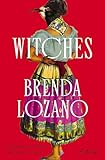
 Two of the most exciting writers working outside of the English language right now are Brenda Lozano and Olga Ravn, and their respective novels Witches and The Employees, both published in English this year, were stellar. The Employees was a particular standout, a taut and truly original work of science fiction that flips the oral history genre on its head. (I wasn’t at all surprised to see it longlisted for a National Book Award and shortlisted for the Booker Prize.)
Two of the most exciting writers working outside of the English language right now are Brenda Lozano and Olga Ravn, and their respective novels Witches and The Employees, both published in English this year, were stellar. The Employees was a particular standout, a taut and truly original work of science fiction that flips the oral history genre on its head. (I wasn’t at all surprised to see it longlisted for a National Book Award and shortlisted for the Booker Prize.)
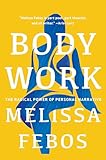
 It’s always fun to encounter a moment in a book when I pause and think, “Hmm, I do not agree with that!” These moments tend to be rare in books that I read for pleasure, but I had them repeatedly reading Melissa Febos’s Body Work and Lillian Fishman’s Acts of Service. Both are excellent books, skillfully written and remarkable for their intellectual and emotional acuity. Both also contained many ideologically chewy moments, when I felt disagreement welling up inside me and got to inspect it closer. I’m looking for more of that in my future reading.
It’s always fun to encounter a moment in a book when I pause and think, “Hmm, I do not agree with that!” These moments tend to be rare in books that I read for pleasure, but I had them repeatedly reading Melissa Febos’s Body Work and Lillian Fishman’s Acts of Service. Both are excellent books, skillfully written and remarkable for their intellectual and emotional acuity. Both also contained many ideologically chewy moments, when I felt disagreement welling up inside me and got to inspect it closer. I’m looking for more of that in my future reading.
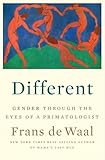 Some of the most fun I had reading this year came from Frans de Waal’s Different: Gender Through the Eyes of a Primatologist. This was also a book that made me stop, think, and assess many times throughout. De Waal has written many books on the intelligence, emotions, and power structures of primates, all of which I am dying to read. But I began with Different because of its focus on gender and how it functions in the wild among our closest animal relatives. I was completely obsessed with this book while reading it. One of my favorite discoveries was learning that we are equally related to chimpanzees as we are bonobos; the former operates via war-mongering patriarchy, the latter via free-love-fueled matriarchy. And yet all we hear is how we’re 99% chimp, never 99% bonobo! Soon after I finished Different I went to the Natural History Museum for the first time and fawned over the primate room. There were no bonobos to be found.
Some of the most fun I had reading this year came from Frans de Waal’s Different: Gender Through the Eyes of a Primatologist. This was also a book that made me stop, think, and assess many times throughout. De Waal has written many books on the intelligence, emotions, and power structures of primates, all of which I am dying to read. But I began with Different because of its focus on gender and how it functions in the wild among our closest animal relatives. I was completely obsessed with this book while reading it. One of my favorite discoveries was learning that we are equally related to chimpanzees as we are bonobos; the former operates via war-mongering patriarchy, the latter via free-love-fueled matriarchy. And yet all we hear is how we’re 99% chimp, never 99% bonobo! Soon after I finished Different I went to the Natural History Museum for the first time and fawned over the primate room. There were no bonobos to be found.

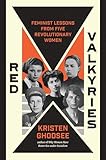
 Finally, in 2022a, I read my three favorite books of the year. It quickly became clear that all of them would be joining my list of all-time favorite books as well. If you take anything from this essay, it should be that the following books and their authors are utterly brilliant: Also a Poet by Ada Calhoun, a memoir of Calhoun’s attempt to write a biography of poet Frank O’Hara and her uneasy relationship with her famous-writer father Peter Schjeldahl; Red Valkyries by Kristen Ghodsee, a group biography of five socialist women from Eastern Europe, outlining the lessons of their lives and work; and Easy Beauty by Chloé Cooper Jones, an inquiry into disability, beauty, art, and motherhood.
Finally, in 2022a, I read my three favorite books of the year. It quickly became clear that all of them would be joining my list of all-time favorite books as well. If you take anything from this essay, it should be that the following books and their authors are utterly brilliant: Also a Poet by Ada Calhoun, a memoir of Calhoun’s attempt to write a biography of poet Frank O’Hara and her uneasy relationship with her famous-writer father Peter Schjeldahl; Red Valkyries by Kristen Ghodsee, a group biography of five socialist women from Eastern Europe, outlining the lessons of their lives and work; and Easy Beauty by Chloé Cooper Jones, an inquiry into disability, beauty, art, and motherhood.
I’d like to focus on Easy Beauty, the most personally affecting of the three. It’s a book that, like Diminished Faculties, feels like a paradigm-shifting contribution to disability studies, but is so much more than just an intellectual achievement. Jones’s insights into disability are the kind that I’ve spent most of my adult life searching for in my reading (and trying to achieve in my writing). Masterful doesn’t even begin to cover it. I’ve been pleased that the word “inspiring” hasn’t appeared in many conversations about the book (disabled folks know what that’s code for), and I think this is a testament to the clarity, authority, and subtlety of Jones’s writing. Examining her existence through the lenses of philosophy, ethics, aesthetics, she pushes her readers to do the same, to rise to her astonishing level of thinking—and to leave any impulse for pity at the door. This is memoir at its best, travelog at its best, cultural criticism at its best, disability writing at its best—creative nonfiction at its best, period. A revelation for me as a reader, a writer, and a person.
2022b

 This year I corrected two of my most glaring Didion blindspots: Play It as It Lays and Blue Nights. Loved the latter; did not care for the former at all. I knew going into Play It as It Lays that I was going to have to put aside my general bias toward nonfiction. My best friend (who only reads fiction) and I tried to book-club it, and it did not go very well. Neither of us liked it even a little bit, nor could we find anything about it that redeemed what a “100% bad time” (her words) we both had while reading.
This year I corrected two of my most glaring Didion blindspots: Play It as It Lays and Blue Nights. Loved the latter; did not care for the former at all. I knew going into Play It as It Lays that I was going to have to put aside my general bias toward nonfiction. My best friend (who only reads fiction) and I tried to book-club it, and it did not go very well. Neither of us liked it even a little bit, nor could we find anything about it that redeemed what a “100% bad time” (her words) we both had while reading.
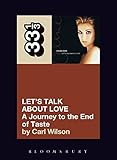 Later I revisited one of my very favorite books, Let’s Talk About Love, Carl Wilson’s entry in the 33 ⅓ series. Let’s Talk About Love is ostensibly about Celine Dion, as Wilson, a Dion hater, tries to demystify the pop diva’s enormous popularity. But the book’s subtitle, A Journey to the End of Taste, presages its grander project: to understand why people like the things they like. Taste is Wilson’s subject and Dion his case study. Laugh-out-loud witty and tremendously insightful, Let’s Talk About Love remains one of the finest pieces of music writing I’ve ever read.
Later I revisited one of my very favorite books, Let’s Talk About Love, Carl Wilson’s entry in the 33 ⅓ series. Let’s Talk About Love is ostensibly about Celine Dion, as Wilson, a Dion hater, tries to demystify the pop diva’s enormous popularity. But the book’s subtitle, A Journey to the End of Taste, presages its grander project: to understand why people like the things they like. Taste is Wilson’s subject and Dion his case study. Laugh-out-loud witty and tremendously insightful, Let’s Talk About Love remains one of the finest pieces of music writing I’ve ever read.
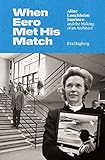
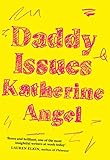 Wilson’s book falls squarely into my favorite literary genre: cultural criticism inflected with personal narrative. Two other books in this genre that I enjoyed this year were Eva Hagberg’s When Eero Met His Match and Katherine Angel’s Daddy Issues. Both are sharp and thorough and showcase their authors’ impressive analytical chops. In When Eero Met His Match, Hagberg studies the personal and professional relationship of critic and publicist Aline Loucheim and architect Eero Saarinen; she credits the former with securing the enduring legacy of the latter. The book has permanently altered my view of how language—crafted by publicists, curators, and critics—shapes the reception of visual art, including architecture. Meanwhile Daddy Issues surveys cultural depictions of father-daughter relationships. Angel, whose Tomorrow Sex Will Be Good Again I very much admired, is as keen a literary critic as they come, but I did find some of her critiques leaned a bit too heavily on psychoanalytic tradition.
Wilson’s book falls squarely into my favorite literary genre: cultural criticism inflected with personal narrative. Two other books in this genre that I enjoyed this year were Eva Hagberg’s When Eero Met His Match and Katherine Angel’s Daddy Issues. Both are sharp and thorough and showcase their authors’ impressive analytical chops. In When Eero Met His Match, Hagberg studies the personal and professional relationship of critic and publicist Aline Loucheim and architect Eero Saarinen; she credits the former with securing the enduring legacy of the latter. The book has permanently altered my view of how language—crafted by publicists, curators, and critics—shapes the reception of visual art, including architecture. Meanwhile Daddy Issues surveys cultural depictions of father-daughter relationships. Angel, whose Tomorrow Sex Will Be Good Again I very much admired, is as keen a literary critic as they come, but I did find some of her critiques leaned a bit too heavily on psychoanalytic tradition.
 Because I am a young white woman writer I have been told by many people—people whose opinions I respect—to read How Should a Person Be? and this year I finally relented. I took it with me to the Cloisters one day and read most of it there, sitting cross-legged on a stone wall in the sun with a bag of chips. And I’m so sorry Sheila Heti—I loved your NYT newsletter but this one was just not for me. Great prose, beautiful prose…
Because I am a young white woman writer I have been told by many people—people whose opinions I respect—to read How Should a Person Be? and this year I finally relented. I took it with me to the Cloisters one day and read most of it there, sitting cross-legged on a stone wall in the sun with a bag of chips. And I’m so sorry Sheila Heti—I loved your NYT newsletter but this one was just not for me. Great prose, beautiful prose…
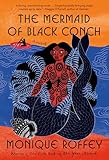
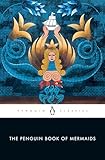 I nearly always remember when and where I obtained a certain book, but my memory fails me with Monique Roffey’s The Mermaid of Black Conch—I’m fairly certain that it just magically appeared on my bookshelf one day. It’s a fairy tale—very out of my wheelhouse—but it’s about mermaids—I love mermaids—so I tore through it. I don’t know that it will stick with me for years to come, but the days I spent with it (and the hours I spent staring at its cover art) were wondrous. (The day I finished it I ordered a copy of The Penguin Book of Mermaids in anticipation of the essay I will inevitably, some day, write about mermaids.)
I nearly always remember when and where I obtained a certain book, but my memory fails me with Monique Roffey’s The Mermaid of Black Conch—I’m fairly certain that it just magically appeared on my bookshelf one day. It’s a fairy tale—very out of my wheelhouse—but it’s about mermaids—I love mermaids—so I tore through it. I don’t know that it will stick with me for years to come, but the days I spent with it (and the hours I spent staring at its cover art) were wondrous. (The day I finished it I ordered a copy of The Penguin Book of Mermaids in anticipation of the essay I will inevitably, some day, write about mermaids.)
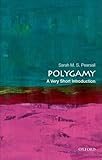 A few months later I went to see Brandon Taylor talk with Elisa Gabbert about her new poetry collection at Greenlight in Flatbush. At some point during the evening I drifted over to a rotating rack with dozens of books from Oxford’s Very Short Introductions series. Sarah M.S. Pearsall’s entry on polygamy caught my eye. It was exactly the primer I was looking for, rigorous and expansive without getting too deep into the weeds. I’m now fascinated by the complex history, practice, and politics of polygamy (that is, both polygyny and polyandry) and am currently looking for more books on the subject. (If you have any recommendations please let me know!)
A few months later I went to see Brandon Taylor talk with Elisa Gabbert about her new poetry collection at Greenlight in Flatbush. At some point during the evening I drifted over to a rotating rack with dozens of books from Oxford’s Very Short Introductions series. Sarah M.S. Pearsall’s entry on polygamy caught my eye. It was exactly the primer I was looking for, rigorous and expansive without getting too deep into the weeds. I’m now fascinated by the complex history, practice, and politics of polygamy (that is, both polygyny and polyandry) and am currently looking for more books on the subject. (If you have any recommendations please let me know!)
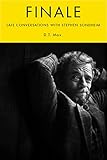 A diehard Sondheim fan, I’ve been looking forward to reading D.T. Max’s Finale since it was first announced. The book compiles several unpublished interviews Max did with Sondheim just before the composer’s death in November of last year. My favorite takeaways: Sondheim watched Breaking Bad, listened to Radiohead, and believed Microsoft Word to be “one of the great inventions of mankind.” There were many points when Max’s interview style frustrated me; I felt if he had more knowledge of Sondheim’s biography going into their conversations, he might have asked more pointed questions and surely would have probed deeper into some of Sondheim’s seemingly offhanded comments about his upbringing. But it’s a book of transcriptions of hours and hours of Sondheim talking so I was always doomed to love it.
A diehard Sondheim fan, I’ve been looking forward to reading D.T. Max’s Finale since it was first announced. The book compiles several unpublished interviews Max did with Sondheim just before the composer’s death in November of last year. My favorite takeaways: Sondheim watched Breaking Bad, listened to Radiohead, and believed Microsoft Word to be “one of the great inventions of mankind.” There were many points when Max’s interview style frustrated me; I felt if he had more knowledge of Sondheim’s biography going into their conversations, he might have asked more pointed questions and surely would have probed deeper into some of Sondheim’s seemingly offhanded comments about his upbringing. But it’s a book of transcriptions of hours and hours of Sondheim talking so I was always doomed to love it.
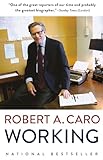
 Finally, at the tail end of 2022, I fell head-over-heels in love with Robert Caro. (More on that in a forthcoming essay.) I started with and utterly adored his memoir Working, which gives insights to his writing and research processes, and am now waist-deep in The Power Broker.
Finally, at the tail end of 2022, I fell head-over-heels in love with Robert Caro. (More on that in a forthcoming essay.) I started with and utterly adored his memoir Working, which gives insights to his writing and research processes, and am now waist-deep in The Power Broker.
